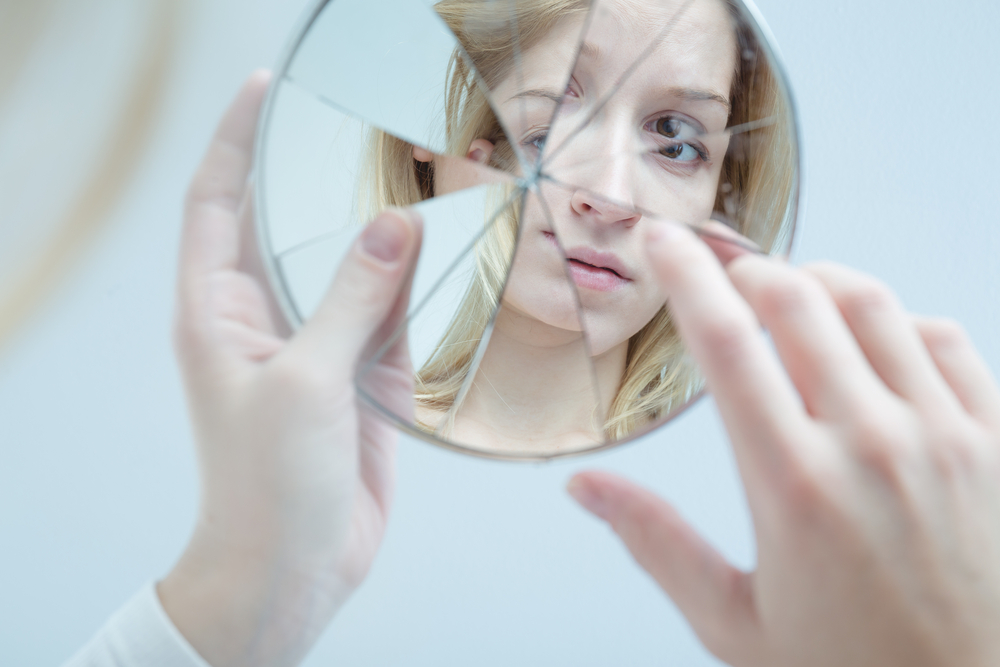What do you see when you look in the mirror? Depending on a number of factors (i.e., mood, hormones, stress levels, etc.) that image could differ greatly from one day to the next, or even from one hour to the next. When you’re feeling negative, your eyes are likely instantly drawn to the areas of your body you don’t like, or want to change, the areas that you think jiggle, the areas you’ve probably dubbed your “trouble spots” or something equally critical.
You’re not alone in the utterance of self-loathing criticisms. At one time or another, most of us have pinned our gaze on our bodies and thought, “I need to lose weight”, “I wish I were a different person”, or (gasp), “I’m disgusting”. However, it’s not your body that’s the issue, and while leading a healthier lifestyle is always a good thing, it’s your brain that’s responsible for those negatives you spy when you look in the mirror. Here’s how you can train the brain to see yourself in a more positive light…
1. Body vs. Brain
What you see is governed by your brain. And your brain presents you with an image based on two things: your mental and emotional state. You can probably guess where this is going if you’ve had a rotten day, messed up at work, and come to home to look in the mirror and judge yourself. You’re correct if you guessed you’re view is most likely gonna be jaded and unflattering.
According to Dr. Debra Luftman and Dr. Eva Ritvo, beauty and mind medics and co-authors of The Beauty Prescription – The Complete Formula For Looking And Feeling Beautiful, if your emotional and/or mental state is negative—it will translate to what you see directly in front of you.
2. Acknowledge What You’re up Against
For example, if your crush suddenly starts a new relationship, chances are you’ll view this person in a negative light based on the fact that you feel hurt. As a result you’ll probably focus on their flaws. However, if this same person was a new neighbor who stopped by to introduce themselves with fresh baked brownies and a bottle of wine, chances are you’d view them positively, and you’d focus on their more positive attributes (i.e., bright smile, cool sense of fashion, nice hair, etc.).
So when you look at your own reflection, keep in mind that you’re up against a powerful force put together by emotional and mental bias that you’ve had you’re entire life, and it may take some time to retrain and improve this negative body image.
3. Stop Comparing Yourself to Others
In the wise words of intuitive eating and body image coach, Golda Poretsky, HHC, “Viewing life as a competition, where you have to constantly be better at whatever—how you look, how you parent, how you write, whatever—doesn’t feel very good…comparing yourself to others is always a losing game.”
She’s so right. We’re all human, which means we all have unique gifts, we all have flaws, and we all have insecurities. Comparisons tend to distort the focus from positive to negative and make us feel even more insecure and competitive.
4. Focus on the Whole
When it comes to building a better body image, the National Eating Disorder Association recommends looking at the whole picture, or person in this case. For instance, when you give yourself the once over, consider that you’re a whole person that can’t be narrowed down to a specific body part.
So take your whole, capable, self in. There’s a lot to be celebrated. Give yourself the respect you give to others, and look upon your being as you view others. Don’t condense your worth down to a sum of specific body parts.
5. Take Pride in You
You’re a fully capable human being. What, you juggle work, school, hobbies, children, family, and still have time to get to the gym? That’s pretty amazing when you hear it from others. So if you juggle multiple life roles, consider yourself just as impressive.
Change the focus from what you look like to all the things you accomplish…and be proud of yourself. Give your body kudos for all of the amazing things it can do on a daily basis (i.e., walking the dog, cleaning the house, chasing the kids, going for a run, doing a hot yoga class, dancing, imagining…breathing). Don’t just think about it, write it down and re-read it often to help re-train that brain.
6. Recognize Patterns
When it comes to changing old, unhealthy patterns and creating healthy, new patterns, practice makes perfect! This process starts with recognizing unhealthy habits. According to the website, EatingDisorderHope.com, “Distorted body image involves a negative pattern of thinking that is highly self-critiquing…[and] constant internal criticism creates [a cycle] of shame, guilt, and embarrassment.
Of course, it takes practice to completely banish negative habits, but paying attention to triggers (i.e., social media, internal talk, conversations, etc.) can help you protest them and choose new, healthier patterns.









